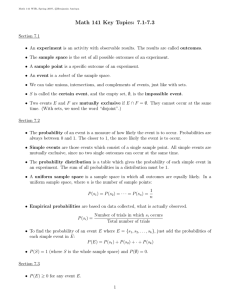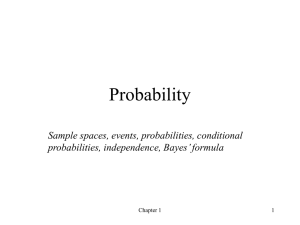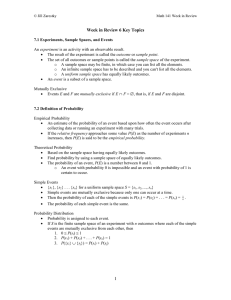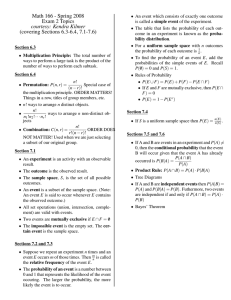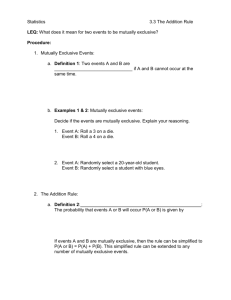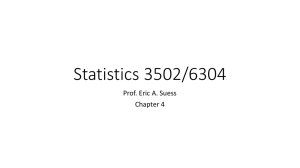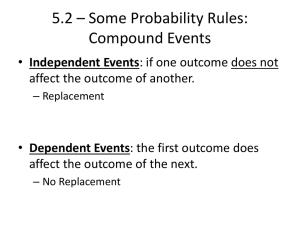Section 3.3, The Addition Rule
advertisement
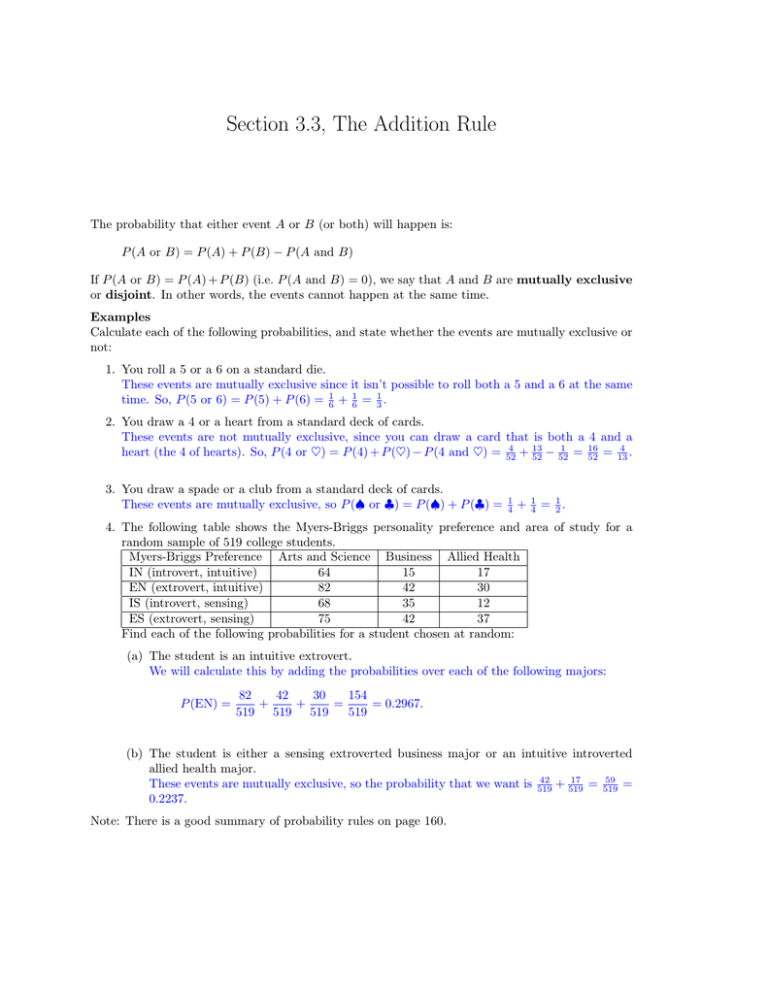
Section 3.3, The Addition Rule The probability that either event A or B (or both) will happen is: P (A or B) = P (A) + P (B) − P (A and B) If P (A or B) = P (A) + P (B) (i.e. P (A and B) = 0), we say that A and B are mutually exclusive or disjoint. In other words, the events cannot happen at the same time. Examples Calculate each of the following probabilities, and state whether the events are mutually exclusive or not: 1. You roll a 5 or a 6 on a standard die. These events are mutually exclusive since it isn’t possible to roll both a 5 and a 6 at the same time. So, P (5 or 6) = P (5) + P (6) = 61 + 16 = 31 . 2. You draw a 4 or a heart from a standard deck of cards. These events are not mutually exclusive, since you can draw a card that is both a 4 and a 4 1 16 4 heart (the 4 of hearts). So, P (4 or ♥) = P (4) + P (♥) − P (4 and ♥) = 52 + 13 52 − 52 = 52 = 13 . 3. You draw a spade or a club from a standard deck of cards. These events are mutually exclusive, so P (♠ or ♣) = P (♠) + P (♣) = 1 4 + 1 4 = 21 . 4. The following table shows the Myers-Briggs personality preference and area of study for a random sample of 519 college students. Myers-Briggs Preference Arts and Science Business Allied Health IN (introvert, intuitive) 64 15 17 EN (extrovert, intuitive) 82 42 30 IS (introvert, sensing) 68 35 12 ES (extrovert, sensing) 75 42 37 Find each of the following probabilities for a student chosen at random: (a) The student is an intuitive extrovert. We will calculate this by adding the probabilities over each of the following majors: P (EN) = 82 42 30 154 + + = = 0.2967. 519 519 519 519 (b) The student is either a sensing extroverted business major or an intuitive introverted allied health major. 42 17 59 These events are mutually exclusive, so the probability that we want is 519 + 519 = 519 = 0.2237. Note: There is a good summary of probability rules on page 160.
